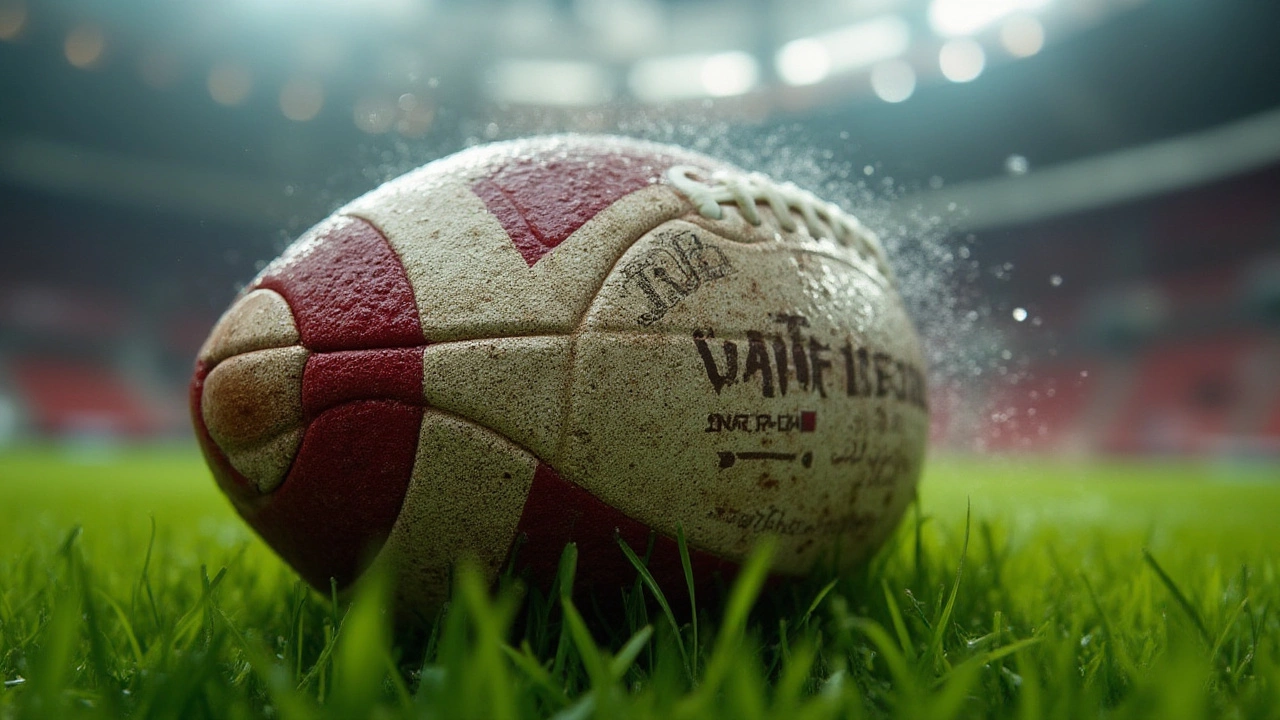Football Ball: Types, Materials, Sizes and Choosing the Right One
When working with football ball, the spherical piece of equipment used in soccer matches around the world. Also known as soccer ball, it plays a central role in training, competition and casual kick‑abouts. Another key piece of the puzzle is ball material, the layers of PU, PVC or leather that affect touch, durability and weather resistance. You’ll also hear about size standard, the official dimensions (size 5 for adults, size 4 for youths) set by FIFA and other bodies and inflation pressure, the recommended PSI range that keeps the ball responsive without getting too hard or too soft. All these elements connect to shape how a ball feels on the foot and how it behaves on the pitch.
First off, the material you pick dictates a lot of the ball’s personality. PU (polyurethane) covers are soft, provide good grip, and last longer in wet conditions, making them a favorite for training sessions. PVC (polyvinyl chloride) is cheaper and tougher but can feel a bit plasticy, which some players don’t like for match play. Full‑grain leather, once the standard for elite matches, still shows up in premium “hand‑stitched” balls that offer exceptional control but need extra care in damp weather. Knowing the trade‑off helps you match the ball to where you play – a hard‑court park might call for a PVC‑based ball, while a grass field in mild weather can benefit from a PU‑covered one.
Size, Weight, and Pressure – Why They Matter
The size standard isn’t just a number on a label. A size 5 ball must weigh between 410‑450 g and have a circumference of 68‑70 cm. If you’re a youth coach, moving down to size 4 (weight 350‑390 g, circumference 63‑66 cm) makes a big difference in how kids control the ball and develop technique. Even the slightest deviation in weight can throw off passing accuracy and shooting power. Inflation pressure ties directly into the weight story – a ball inflated to the lower end of its recommended PSI (usually 0.6‑0.8 bar) feels softer, absorbs impact better, and is easier on the ankle. Over‑inflating to the high end (1.0 bar) makes the ball rebound faster, which some senior players prefer for a sharper touch.
Beyond the basics, the ball’s surface pattern—whether it’s a traditional 32‑panel design or a modern 14‑panel thermally bonded shell—affects aerodynamics. Fewer panels generally mean smoother airflow and a more predictable flight, which is why many top‑tier match balls use 6‑10 panels. The stitching method also matters: hand‑stitched balls often feel more “alive” because the seams flex with each kick, whereas machine‑stitched or glued panels give a uniform feel but can feel a bit dead to some players.
So how do you actually pick the right ball for your needs? Start by asking three simple questions: Where will you play most often? Who’s the primary user (adults, teens, kids)? What’s your budget? If you mostly train on a rough concrete surface, a durable PVC ball with a sturdy outer layer will survive longer. If you’re coaching a youth team, go for a size 4 PU ball that stays soft enough for small feet but still offers decent bounce. For a weekend league on a grass pitch, a FIFA‑approved size 5 ball with a hand‑stitched leather or high‑quality PU cover gives you the best touch and flight stability.
Don’t forget the practical side of maintenance. Keep a pressure gauge handy and check the ball before each session – a drop of a few PSI can change the ball’s behavior. Store it in a cool, dry place and avoid leaving it in direct sunlight for hours, as heat can over‑inflate the ball and damage the bladder. A quick wipe with a damp cloth after muddy games removes grime that can wear down the cover over time.
All of this might feel like a lot, but once you understand the core attributes – material, size, weight, pressure, and panel design – choosing a football ball becomes a straightforward decision. Whether you’re gearing up for a local league, a school‑yard scrimmage, or just a Sunday kick‑about, the right ball can boost confidence, improve skill development, and make every session more enjoyable. Below you’ll find a collection of articles that dive deeper into equipment choices, training drills, and performance tips, all aimed at helping you get the most out of your football ball.
